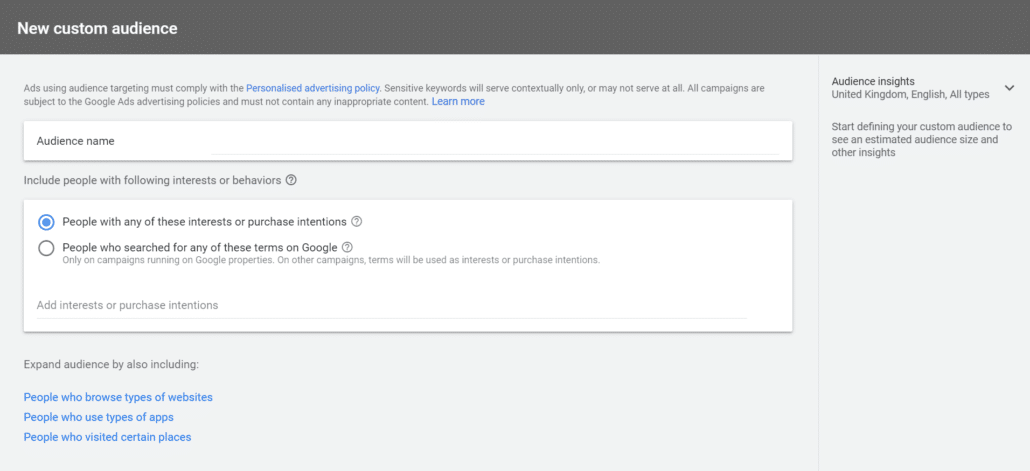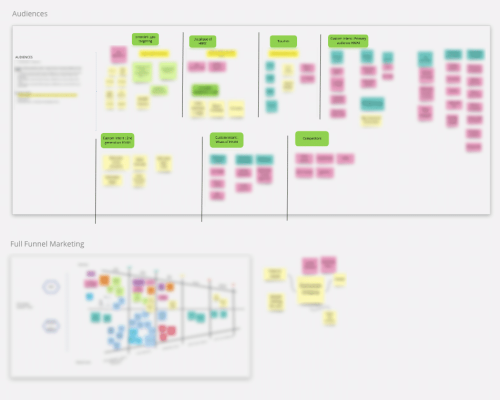Join
"The Marketing Mixtape"
Get the latest digital marketing insights straight to your inbox.
Reaching your ideal customers



Before this can take place, of course, it’s important that our clients have a good idea of who their desired customers are. If this is an open question, that’s not a problem. It just means adding an extra step that involves interviews to establish ideal customer personae. Once these are established, we can truly begin to tap into the power of custom audiences.
If we want to be truly thorough, we can go further and organise upwards of five face-to-face interviews with representative individuals from the targeted audiences. These in-depth exchanges will identify what kinds of stories they are telling themselves, their worries, their goals, as well as their personal and professional interests, all of which are valuable insights for your campaign strategy.
To give a concrete example, we recently ran a custom audience responsive display and YouTube campaign for a financial company targeting high-net-worth individuals in Switzerland. We identified the principal locations these personae were most likely to live in or visit, which venues they were likely to frequent, and which websites they viewed. We then worked with our client to compile a list of all these websites categorised either by city or by interest.
For the custom audiences that targeted cities, we included all the websites of the physical locations—such as hotels, high-end restaurants, Polo and Golf clubs, etc.—that are routinely visited by high-net-worth individuals. Alongside these, we also targeted specific interests, such as luxury sport, luxury travel, luxury property, and so on.
You may decide you want to run your own workshop to really hone in and identify the interests and behaviours of your target audiences. Google Ads’ custom audiences will help you reach your goals, but the output will be relative to the effort you put in. The more in-depth you can go, the better.
Remember that it’s not all about the tools, it’s how you put these tools to good use. Want to learn more about building audiences around third-party website traffic? Need help coordinating the research around your ideal customers? Maybe you could use some support in putting these insights about customer audiences into practice? Don’t hesitate to get in touch! We at comtogether would be happy to help.
You want to learn more about Google Ads ? Discover our Whitepaper ! 👇
Get the latest digital marketing insights straight to your inbox.
